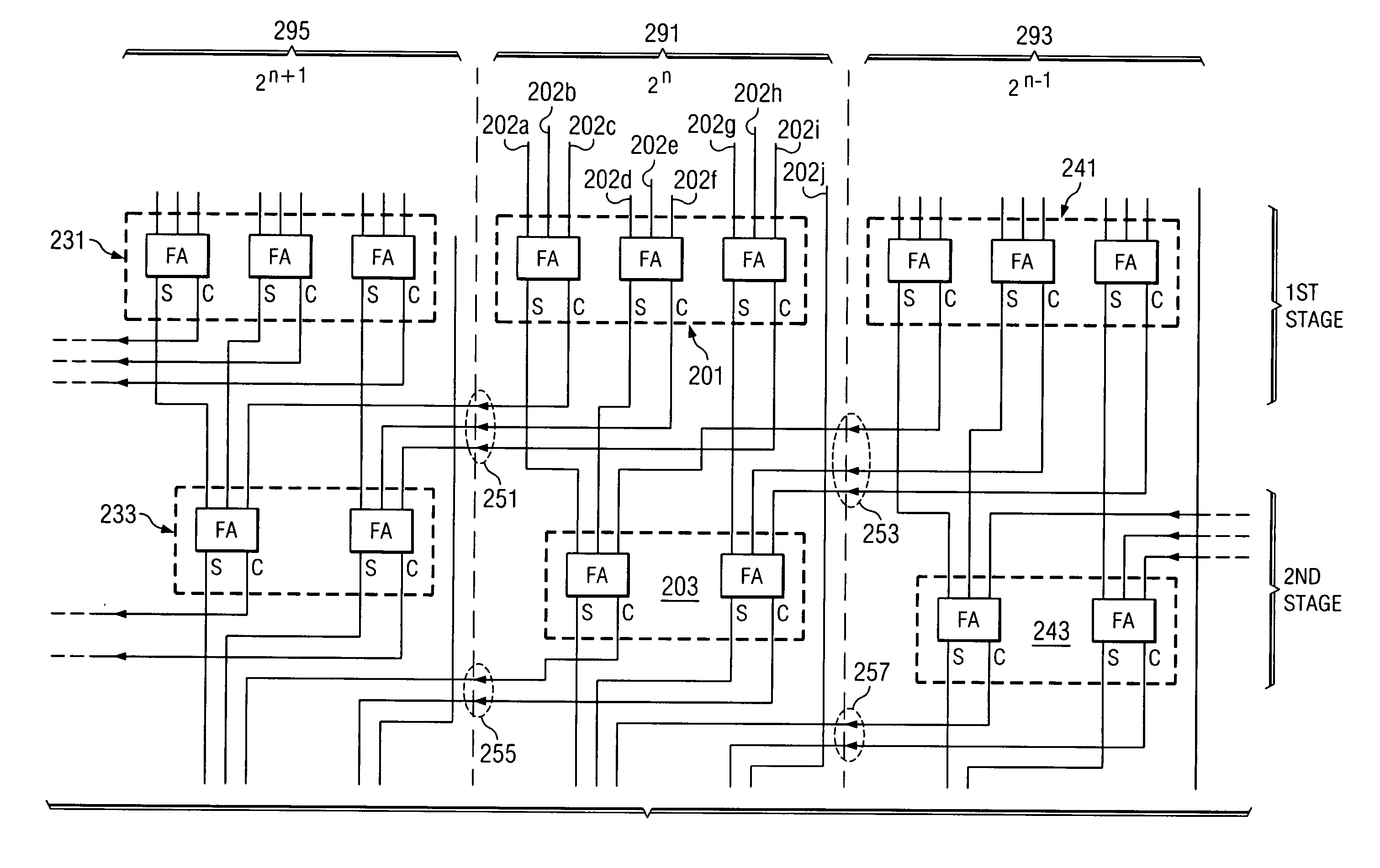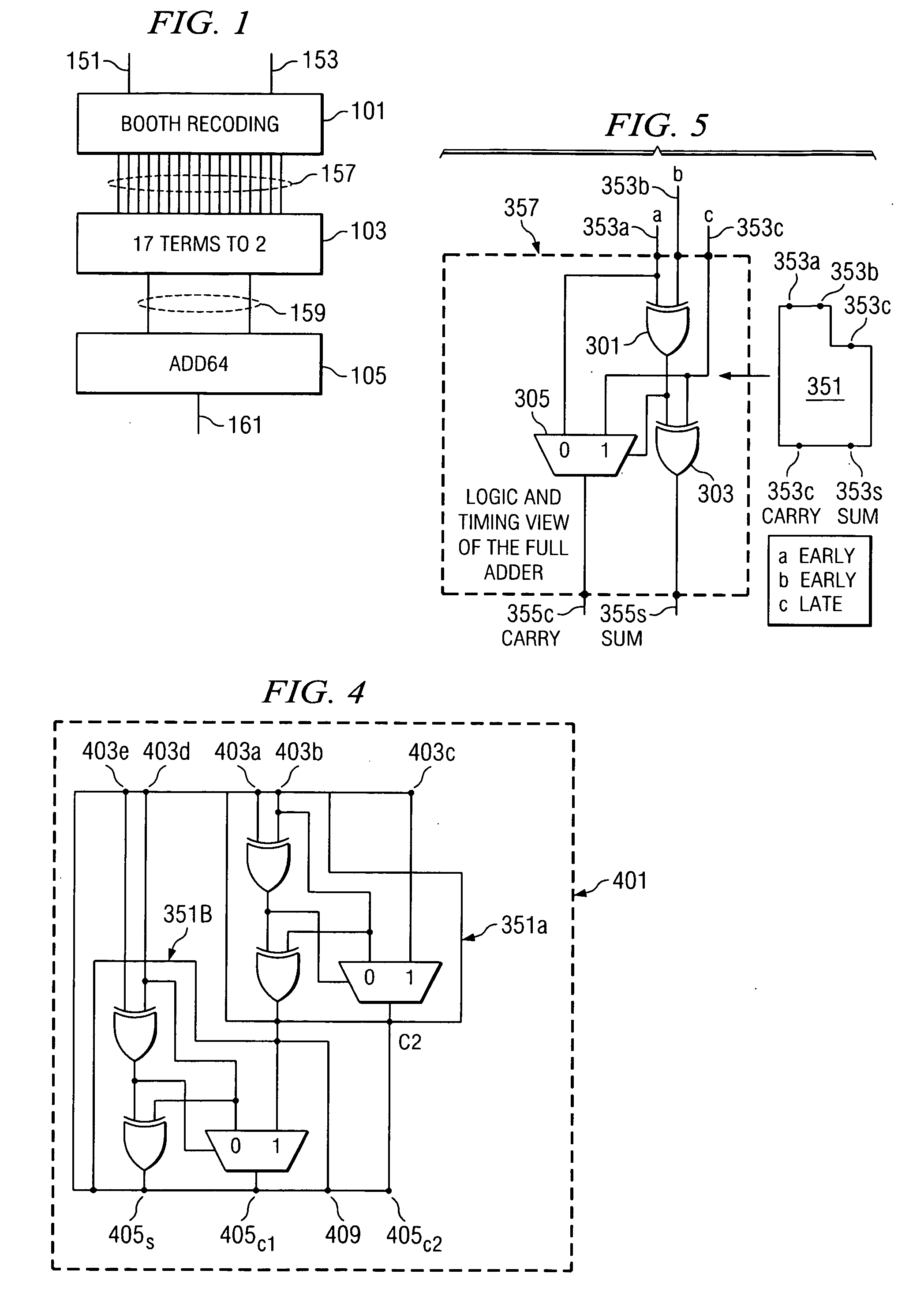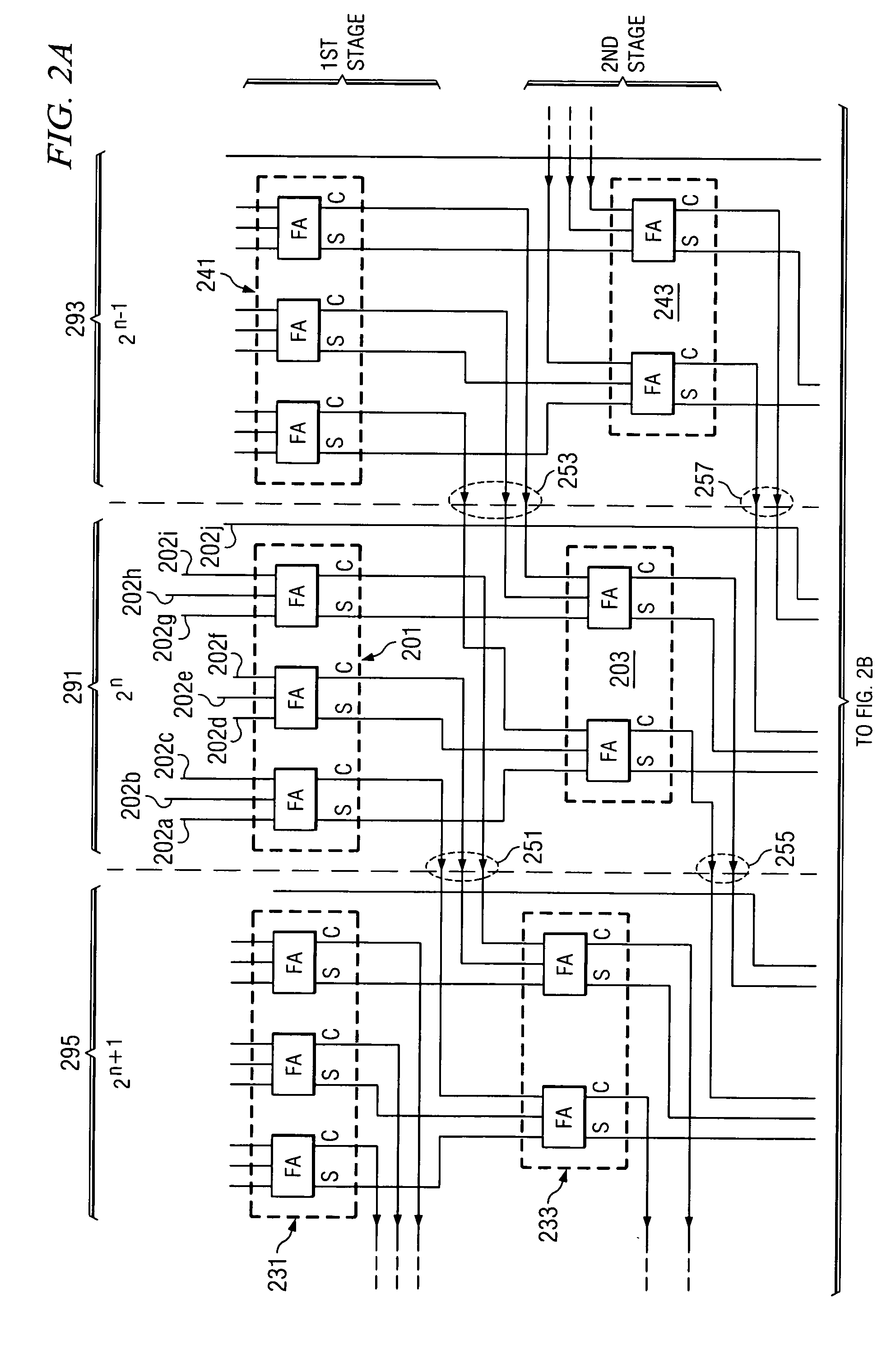Multiplication circuitry
a multiplication circuit and circuit technology, applied in the field of multiplication circuits, can solve the problems of strict demands, lack of flexibility in input timing and output timing of full adders, etc., and achieve the effect of reducing the severity of the timing requirements of inputs and lessening timing constraints
- Summary
- Abstract
- Description
- Claims
- Application Information
AI Technical Summary
Benefits of technology
Problems solved by technology
Method used
Image
Examples
Embodiment Construction
[0032]FIGS. 2 through 6, discussed below, and the various embodiments used to describe the principles of the present invention in this patent document are by way of illustration only and should not be construed in any way to limit the scope of the invention. Those skilled in the art will understand that the principles of the present invention may be implemented in any suitably arranged circuitry.
[0033] The encoding, partial product generation, and addition stages of the multiplication circuits as known in the art are not described in further detail. For the examples described with reference to FIGS. 2 and 3, a compression column circuit is shown which receives the output from a Booth encoding algorithm, which generates 10 partial products. With reference to FIG. 6, a compression column circuit receives an output from a Booth encoding algorithm which generates 25 partial products.
[0034] As appreciated by a person skilled in the art, the examples described below with reference to 10...
PUM
 Login to View More
Login to View More Abstract
Description
Claims
Application Information
 Login to View More
Login to View More - R&D
- Intellectual Property
- Life Sciences
- Materials
- Tech Scout
- Unparalleled Data Quality
- Higher Quality Content
- 60% Fewer Hallucinations
Browse by: Latest US Patents, China's latest patents, Technical Efficacy Thesaurus, Application Domain, Technology Topic, Popular Technical Reports.
© 2025 PatSnap. All rights reserved.Legal|Privacy policy|Modern Slavery Act Transparency Statement|Sitemap|About US| Contact US: help@patsnap.com



